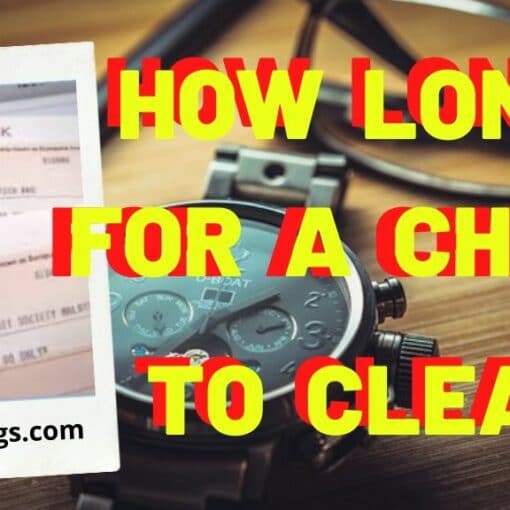ACH Transfer – Automated Clearing House Transfer Guide
You are probably using ACH transfers without even realizing it. If you’re paid via direct deposit, for example, that’s a form of ACH transfer. Paying bills online through your bank account is another example. You can use ACH transfers to make single or recurring deposits into an individual retirement account, an investment brokerage account, or your personal savings account. Business owners use ACH to pay vendors or receive payments from clients and customers.
What is an ACH transfer?
An ACH transfer is the electronic movement of money between banks through the Automated Clearing House network, one of the biggest U.S. payment systems. It is an electronic, bank-to-bank exchange processed by the Automated Clearing House network.
The types of transfers include external funds transfers, person-to-person payments, bill payments and direct deposits from employers and government benefit programs. Business-to-business payments also use the ACH network. For sending money to friends and family, many transfer providers, including banks and third-party apps like PayPal and Venmo, all use the ACH network.
ACH Transfer vs EFT (Electronic Funds Transfer)
An ACH transfer is often referred to as an EFT or electronic funds transfer. EFT is a collective term that encompasses various types of financial transactions including ACH transfers. However, in practice there is a difference between the two terms. An ACH, by default, is an EFT – but an EFT is not always an ACH transfer. An EFT is any electronic transfer of funds between two accounts. An ACH is specifically an automated transfer, and is processed through the automated clearing house network. EFT transactions can be between different accounts within the same bank or financial institution or across multiple banks. In addition to ACH payments, EFT payments include everything from eChecks to ATM or POS transactions.
Types of ACH transfers
ACH transfers are processed in two ways, which vary in delivery speed and cost
- ACH debit transactions involve money getting “pulled” from an account. For example, when you set up a recurring bill payment, the company you’re paying can pull what it’s owed from your account each month.
- ACH credit transactions let you “push” money online to accounts at different banks, either accounts you own or friends’ and family members’ accounts.
ACH Direct Deposits
An ACH direct deposit is any kind of electronic transfer made from a business or government entity to a consumer. With ACH direct deposits, you’re receiving money. When you send one, you’re making an ACH direct payment. The kinds of payments that fit in this category include:
- Paychecks
- Employer-Reimbursed Expenses
- Government Benefits
- Tax Refunds
- Annuity Payments
- Interest Payments
Direct payments can be used by individuals, businesses, and other organizations to send money. For example, if you’re paying a bill online with your bank account, that’s an ACH direct payment. Social payment apps such as Venmo and Zelle also use ACH letting you send money to friends and family.
ACH Transfer vs EFT – How Long it Takes
It depends on whether you’re moving money out of your account or receiving money into it. Debit transactions typically take one business day to settle. Credit transactions generally take one to two business days. This is because money doesn’t move directly from one account to another. Instead, clearing houses act as the middle men that facilitate transactions. The Clearing House and the Federal Reserve are the two main ACH processors, and they stick to a schedule for processing debit and credit transmissions. Banks follow this schedule, batching up ACH transactions and transmitting them to the clearing houses at prearranged times throughout the business day. d
Delivery of ACH transfers can take several business days – actual days that banks are open. Wire transfers are faster because they are processed in real-time by actual human beings. ACH transfers are processed by a network operator in batches only three times a day. Because of batch processing and the use of a third party clearing house, ACH delivery can take several business days. Financial institutions can choose to have ACH credits processed and delivered either within a business day or in one to two days. In contrast, ACH debit transactions must be processed by the next business day.
These timelines are based on rules from the National Automated Clearing House Association, the trade group that oversees the network. Upon receiving the money, a bank or credit union might also hold these transferred funds for a period of time, so the total delivery time varies. NACHA made a rule that ensures banks can process payments the same day they’re sent, but it’s up to each bank whether it charges you for expediting a payment. (Source: nerdwallet.com)
Transfer Speed – Wire transfers
Wire transfers can move funds from one bank to another within one business day. The money can even be available for spending that same day. However, sometimes the funds aren’t visible in the recipient’s account, or you don’t have access to funds immediately after you receive a wire transfer. Although the process is mostly automated, a bank employee often needs to review wire transfers and get the funds into the destination account. If time is of the essence, request wire transfers first thing in the morning. This allows ample time left in the day to complete the process. International wires can take an extra day or two.
Transfer Speed – ACH Transfers
ACH transfers typically take one business day to complete. Banks and clearinghouses process ACH payments in batches—they’re all done together instead of being handled individually. However, the ACH system is moving toward same-day transfers, and some payments are already eligible for same-day treatment. Increasingly, you’ll see payments take place more quickly as organizations adapt to new rules. Eventually, there will be little difference in the time required to process either type of wire transfer – ACH or ETF.
ACH TRansfer – What it costs
ACH debit transfers, for payroll direct deposits and most bill payments, are typically free. However, there can be fees involved to expedite a payment for same day treatment. ACH transfers such as bill payments tend to be free, while transfers between linked accounts at different banks are either free or about $3. For ACH credit transfers, banks might charge a fee of around $3 for sending money between accounts that you have at different banks. But, many offer these external funds transfers for free. Also, there’s usually no fee to receive them. Person-to-person payments that you initiate through your bank or third-party apps such as PayPal can cost a small fee, depending on the platform and payment method.
“It depends on the financial institution, but ACH debit transactions are typically free. You can, however, expect to be hit with a fee if you’re expediting the process and opting for a same-day transfer. Fees and protocols range depending on your bank. For example, First Citizens Bank does not charge extra if you’re receiving a same-day ACH transaction, but does tack on a $1 fee for each transaction you originate. One other scenario that may cost you is setting up external transfers — such as moving money from one bank account to an account at another bank, which is sometimes called an external transfer. The fee will depend on your bank. U.S. Bank, for instance, says they do charge for outbound external transfers, but doesn’t specify how much. This isn’t necessarily the norm, though: banks like Ally Bank charge nothing for external transfers.” Source: depositaccounts.com
Wire transfer Cost
Sending a bank wire transfer within the U.S. tends to cost from $20 to $30. Also, there’s usually a fee to receive one. The wire network processes transactions in real time. Therefore, you can generally expect U.S. wire transfers to be delivered within hours, if not minutes. Because of its cost and speed, a wire transfer is best for large-sum and time-sensitive transfers, either in the U.S. or abroad.
ACH Transfer – Advantages
Using ACH transfers to pay bills or make person-to-person payments offers several advantages, starting with convenience.
- Convenient – Paying your mortgage, utility bill, or other recurring monthly expenses using an electronic ACH payment may be easier and less time-consuming than writing and mailing a check.
- Cost Effective – You can save yourself a few bucks by not having to spend money on stamps.
- Secure – An ACH payment can be more secure than other forms of payment.
- Fast – Sending and receiving ACH payments is usually quick. According to NACHA, settlement—or the transfer of funds from one bank to another via the ACH network—generally happens the next day after the transaction is initiated. NACHA operating rules require that ACH credits settle in one to two business days and ACH debits settle the next business day.
- Often free of charge – Another benefit is that ACH transfers are often free, depending on where you bank and the type of transfer involved. For example, your bank may charge you nothing to move money from your checking account to an account at a different bank. And if it does charge a fee, it may be a nominal cost of just a few dollars. Compared to a wire transfer, which can have an average fee ranging from just under $14 to nearly $50, ACH transfers are much more cost-efficient. Wire transfers are known for their speed and are often used for same-day service, but they can sometimes take longer to complete. With an international wire transfer, for instance, it may take several business days for money to move from one account to another, then another few days for the transfer to clear. (Source: investopedia)
ACH Transfer – Drawbacks
ACH transfers are convenient, but not necessarily perfect. There are some potential drawbacks to keep in mind when using them to move money from one bank to another, send payments, or pay bills. Sending money via ACH between banks can be convenient, but there are some limitations, including:
- Amount limits: You may have a daily and monthly cap on how much money you can move.
- Cutoff times: After a certain hour, a transfer won’t be processed until the next business day. If you send money on a Friday, for instance, processing might not start until the following Monday.
- Fee for insufficient funds: If you don’t have enough money in your account, your bank might charge you a fee and stop the transfer.
- Not often available for international transfers: Your bank probably won’t allow consumer ACH transfers to banks outside the U.S.
- Transfer limits for savings accounts: A law requires banks to limit the combined number of certain withdrawals and transfers from savings accounts to six per month. If you’re sending over the limit, consider opening a second account. (Source: nerdwallet.com)
ACH Transfer Transaction Limits
Many banks impose limits on how much money you can send via an ACH transfer. There may be transaction limits, daily limits, and monthly or weekly limits. There might be one limit for bill payments and another for transfers to other banks. Also, one type of ACH transaction may be unlimited but another may not. Banks can also impose limits on where you can send money to. For example, they may prohibit international transfers.
Transferring Too Frequently From Savings Could Trigger a Penalty
Savings accounts are governed by Federal Reserve Regulation D. This limits certain types of withdrawals to six per month. If you go over that limit with multiple ACH transfers from savings to another bank, you could be hit with an excess withdrawal penalty. And if frequent transfers from savings become routine, the bank may convert your savings account to a checking account.
Timing Matters for ACH Transfers
Time of day matters when you choose to send an ACH transfer. Not every bank sends them for bank processing at the same time. There may be a cutoff time to get your transfer in to have it processed for the next business day. Initiating an ACH transfer after the cutoff could result in a delay. This may be an issue if you’re trying to hit a due date for one of your bills to avoid a late fee. ACH transfers can be a cheap way to move money, but check to find out your bank’s policies first. Especially if you’re the one sending funds. This will help you avoid any fees, unexpected processing delays and potential limits. This will help you avoid surprises and get the most out of this service.
ACH Transfer Alternatives: Other Ways to Send Money Online
If you need a faster way to send money online, a social payment money transfer app can help. These apps allow you to send money to people using their email address or phone number. The money you send can come from your bank account, credit card, or an in-app balance. The biggest advantage of these apps, aside from being easy to use, is the speed they can offer for transfers. Depending on which one you’re using, you may be able to complete a money transfer in just a few minutes. That gives them an edge over ACH transfers.
Zelle
Many banks — including Chase, Citi and Bank of America — have partnered with Zelle to enable near-instant money transfers, often through the bank’s app. This makes it incredibly easy to pay everyone from the babysitter to the dog walker. Zelle makes the funds available now, then finalizes the transfer later via the ACH network. The kicker is that it’s generally free, unless your bank charges for it.
PayPal
Chances are you’re already using PayPal. The platform boasts 286 million active accounts worldwide. You accumulate funds in your PayPal digital wallet, and when you’re ready to transfer them out to your bank account, a few quick clicks will start the ACH transfer process. The funds take one to two business days to become available, but the service is free — though you could opt for same-day availability. PayPal charges a 1 percent fee per transfer up to $10. You can also pay other people and businesses directly from your PayPal wallet. Warning: PayPal does charge for some of its services.
Venmo (owned by PayPal) uses the same idea, but integrates a social feed where users can like and share purchases and payments. (Source: investopedia.com)
Check the Fees
Most of the time money transfer apps don’t charge a fee to send money to friends and family. However, some can charge a processing fee of nearly 3% when you pay with a credit card, so read the fine print.
ACH Transfer – The Bottom Line
ACH transfers can be a convenient and efficient way to send money or receive it. If you use them, make sure you understand your bank’s policies for ACH direct deposits and direct payments. Also, be vigilant for ACH transfer scams. A common scam, for instance, involves someone sending you an email telling you that you’re owed money. All you need to do to receive it is provide your bank account number and routing number. Always be careful providing personal information – especially in response to an unsolicited email.
An ACH transfer is a quick way to move money from one bank account to another. This streamlines everything from paying bills to receiving your monthly paycheck. There are a lot of options at your fingertips. But, not all of them are free, so be sure to do your homework — especially where bank-to-bank transfers are concerned.





